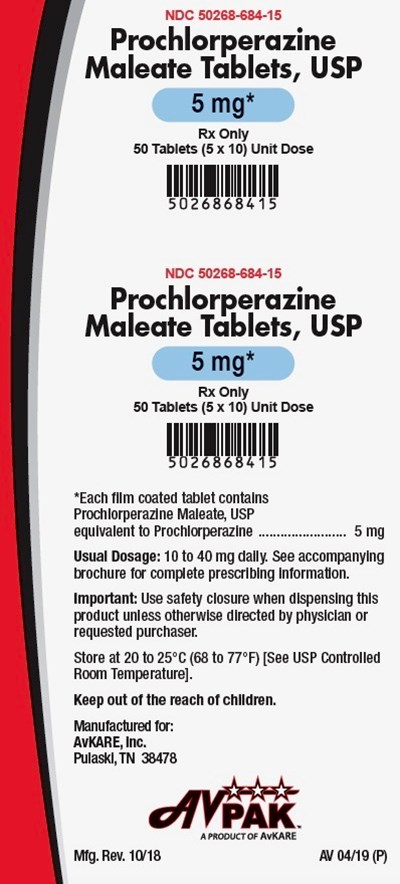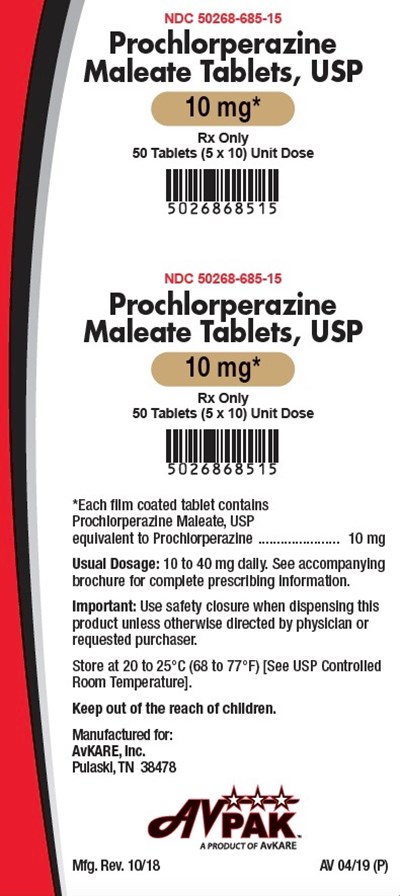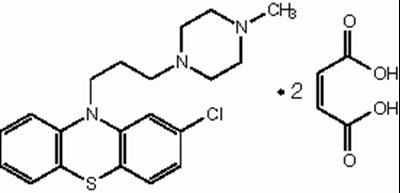Product Images Prochlorperazine Maleate
View Photos of Packaging, Labels & Appearance
Product Label Images
The following 3 images provide visual information about the product associated with Prochlorperazine Maleate NDC 50268-684 by Avpak, such as packaging, labeling, and the appearance of the drug itself. This resource could be helpful for medical professionals, pharmacists, and patients seeking to verify medication information and ensure they have the correct product.
5mg - Label 5026868415 Prochlorperazine Maleate 2019 5mg

Prochlorperazine Maleate Tablets are prescription medication containing 5mg of Prochlorperazine Maleate, USP per film-coated tablet. The medication comes in a bottle containing 50 tablets, with each tablet being a unit dose. The usual dosage for adults is 10 to 40 mg daily. The medication should be stored at 20 to 25 degrees Celsius and kept out of the reach of children. Safety closures are advised unless directed otherwise by a doctor or purchaser. The medication is manufactured by AVKARE, Inc. and more information can be obtained from the accompanying brochure.*
10mg - Label 5026868515 Prochlorperazine Maleate 2019 10mg

This is a prescription medication with the NDC number 50268-685-15 containing Prochlorperazine Maleate tablets, USP with a strength of 10mg. It comes in a unit dose package of 50 tablets in which each film-coated tablet contains 10mg of Prochlorperazine Maleate, USP. It is normally taken orally with 10 to 40 mg daily and is used for various conditions. The medication must be stored at a temperature of 20°C to 25°C and must be kept out of reach from children. It has been manufactured by AVKARE, Inc. and should be administered with safety closure unless directed by a physician. For more information, you can refer to the accompanying brochure.*
* The product label images have been analyzed using a combination of traditional computing and machine learning techniques. It should be noted that the descriptions provided may not be entirely accurate as they are experimental in nature. Use the information in this page at your own discretion and risk.
